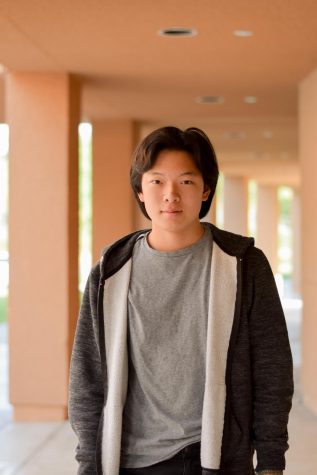OC House Representatives: Unexpected Republican turnout
January 7, 2021
The 2020 election flipped the script for Orange County, with Republican County Supervisor Michelle Steel and former Republican State Assemblywoman Young Kim both defeating incumbent Democrats for seats in the House of Representatives. This outcome was seemingly surprising to the majority of political think tanks; sources including Politico, Inside Elections and The Cook Political Report all predicted in June and July that the 48th and 39th congressional districts would likely remain blue. So how exactly did these two politicians gain an edge in this year’s house races?
One of the most distinctive features of Orange County up until 2016 was its historic position as a sturdy Republican stronghold. Former President Ronald Reagan specifically called it a place where “all the good Republicans go to die,” and Orange County’s Republican majorities in several elections led to key California electoral college votes ensuring the victories of Richard Nixon, Reagan and George H.W. Bush.
As time went on, however, it became apparent that both the government and the governed underwent heavy changes. Notably, the Republican Party has transitioned from a more moderate party under George H.W. Bush to an increasingly ideological one in modern times, moving farther to the right on the political spectrum. The General Social Survey found that more self-identified Republicans have been classifying themselves as “extremely conservative” over the past several decades. One specific change in the GOP is the Tea Party movement which was officially launched in 2009 with the support of Ron Paul’s 2008 presidential campaign voter base. Lobbying for the significant reduction in the size of the federal government, opposing tax increases and protesting for the strengthening of anti-immigration policies, the Tea Party garnered copious amounts of right-wing and libertarian support.
The Republican Party also used to be more demographically connected with the public. As the United States becomes older, more diverse and more educated, the Republican Party is catering to older and therefore more conservative people. A study by the Pew Research Center tracking support for the GOP by age found that 38% of Republicans were 50 years old or older in 1992. By 2016, that number had grown to 58%.
The cosmopolitan and liberal-leaning voters that are predominantly Generation Z and millenials, combined with the young voters’ general unfavorability towards President Trump, led to Orange County’s transformation into a purple region. A major contributor is the increasing number of college degree-holding suburbanites moving into its borders to start their families. In 2018, a 71% voter turnout in the midterms elections flipped all four Republican congressional seats in Orange County to Democrats. All of these Democrats were neophytes in the campaign process.
In this year’s election, two of these seats have been reverted back to red. Considering Orange County’s transformation to a purple state and the fact that Villa Park is the only city in the county to have 50% or more Republican voters in 2019, it doesn’t seem to make much sense that these freshmen representatives would be voted out.
However, we can see that the Republican winners, Steel and Kim, both share certain qualities. They are both South Korean first generation immigrants that do not look like your average GOP candidates. Both of them work in politics, and they could draw support from their political experience as well as the prolific Asian community in Orange County. Their background and story of success may resonate with voters, as Orange County is the most diverse county in the entire state.
Another variable that earned Steel and Kim more votes than their Democratic competition is the circumstances surrounding Trump. According to Democratic Assembly Speaker John Pérez, Republican-leaning voters in 2018 could only express their dislike towards Trump by voting blue in the congressional races. In contrast, this same demographic could now cast an anti-Trump vote for Joe Biden in the presidential elections while still expressing their conservative beliefs down the ballot. For example, California’s 48th congressional district saw the majority of one in ten precincts voting for Biden and Steel. This rare act of ballot splitting shows that Orange County voters are voting across party lines this year, contributing to Steel’s close win over incumbent Harley Rouda.
Orange County’s voter turnout in the 2020 election was rather high, with 86.6% of eligible voters going to the polls. Nonvoters, making up 43% of the voting population, are generally less white, poorer, younger and more likely to be women. Thus, many experts have suggested that low voter turnout is the large cause of Trump’s 2016 election win.
Even though a high turnout has traditionally benefited Democratic candidates more, this year was different. According to Mark Baldassare, president of the Public Policy Institute of California, 2020’s historic turnout stands for both sides of the coin. An October poll by this institute found that roughly three-fourths of both GOP and Democratic voters felt “more enthusiastic” than usual about the election.
Many say that Orange County will become permanently blue in the near future, but that just might not be the case. The county-sweeping Democrats two years ago, as well as this year’s two flipped districts, were similarly impacted by voter reaction to Trump, the nature of congressional candidates and rate of voter turnout. Orange County is purple, and will likely retain its reputation as a political battleground for years to come.



![AAAAAND ANOTHER THING: [CENSORED] [REDACTED] [BABY SCREAMING] [SIRENS] [SILENCE].](https://thehowleronline.org/wp-content/uploads/2025/06/lucy-1200x800.jpg)





















































![AAAAAND ANOTHER THING: [CENSORED] [REDACTED] [BABY SCREAMING] [SIRENS] [SILENCE].](https://thehowleronline.org/wp-content/uploads/2025/06/lucy-300x200.jpg)